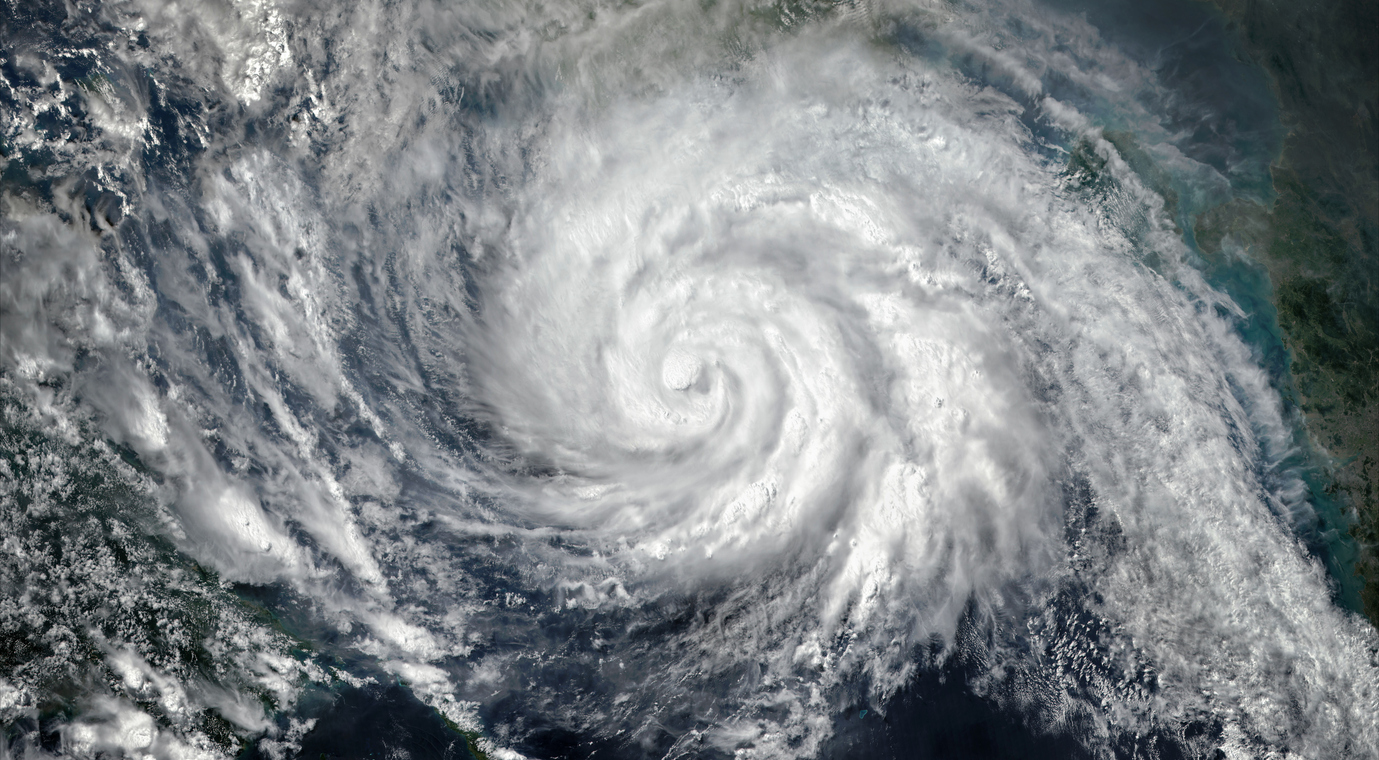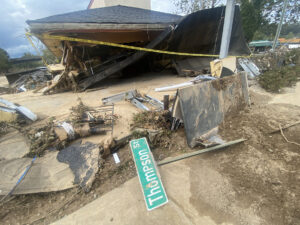How communicators can support employees post-disaster
Create simple and effective ways for employees to support each other now and in the future.

Hurricane Milton struck Florida Wednesday night, lashing the Gulf Coast with 100 mph winds and multiple tornadoes that left more than 3 million without power. Milton’s Florida landfall comes just 11 days after Hurricane Helene swept through Florida and across the southeast U.S., killing more than 220 people and causing catastrophic flooding from Georgia to North Carolina.
In the aftermath of natural disasters like Helene and Milton, companies often support relief and recovery efforts through direct donations or by getting the word out via a special disaster donation page. But how can companies support affected employees and encourage their colleagues to contribute?
Spurred by a question from a Ragan’s Communications Leadership Council member, we collected additional ways employers can help.
Provide direct aid through an employee relief fund
An employee assistance fund (EAF) is the logical way to provide short-term immediate assistance, said Amanda Ponzar, a veteran nonprofit communications executive and member of Ragan.com’s Editorial Advisory Board.
An EAF is a program established by employers that administers grants to help employees experiencing hardship. Grants can cover everything from federally designated disasters to medical emergencies, fires and other destruction of property. Ponzar pointed to this example of an EAF administered by CVS Health.
Employers can either set up and administer their own charity or private foundation or partner with an established nonprofit institution. Employer-run private foundations come with restrictions that may limit grants to qualified disasters and will require the creation of a new corporate entity with an ongoing charitable mission.
That makes partnering with an existing charity a better option for some. This setup simplifies administration and may expand the range of situations the fund can support, all while offering similar tax benefits for both the company and employees. The U.S. Chamber of Commerce Foundation has a useful FAQ on employee assistance funds.
Collect donations or encourage crowdfunding
Short of setting up a formal emergency relief fund, some employers organize personal cash donations which are distributed confidentially to employees in need, Ponzar said. This is similar to when employees chip in to buy a colleague a retirement gift or contribute to a baby shower for an expectant coworker.
Crowdfunding through a platform such as GoFundMe is another option. It’s simple to set up and familiar to many. However, third-party platforms charge administrative fees that can eat into the amount raised and donations don’t yield tax benefits to employees.
Depending on the level of employer involvement, it may present “tax-related complexities for the employer that organizes the funding campaign,” according to HR Daily Advisor.
Enable leave-sharing
Another simple idea is to encourage employees to share their paid time off (PTO). This doesn’t require additional out-of-pocket money for employers, and IRS rules allow employees to donate PTO tax-free in the case of a major disaster. Like cash or other donations, PTO must be donated voluntarily by employees. The Society for Human Resource Management has a sample leave donation policy that employers can download and customize.
In addition to donations, employers can also allow employees outside the disaster area to take paid time off to assist in relief efforts. That time will need to be tracked and any exceptions to company PTO policy must be applied consistently to avoid claims of discrimination.
Focus on emotional wellbeing
For many outside the affected area, Hurricane Milton will soon fade into memory like the countless hurricanes, wildfires, tornadoes and floods before it. For those whose lives and livelihoods are impacted, it’s not so simple.
Everyone’s grieving process is different, said Dr. Jennifer R. Levin, a traumatic grief therapist and founder of Traumatic Grief Solutions, and employers need to be prepared to support them long-term.
“The hurricane and the storms are all over the news right now,” Levin said. “But in a week or two weeks, they’re not going to be. If you’re living in a town that was demolished, it’s going to be very obvious but the rest of the world is going to forget.”
Provide support services
Beyond immediate and obvious needs such as ensuring employees are safe, Levin highlighted the 4 Cs of support services:
- Communication: Transparency is the goal so she recommended daily communication, even twice a day if necessary. “You cannot overcommunicate, so letting everyone know this is what’s going on, we’re in contact with everybody, everybody’s safe or we have X amount of people who have been displaced,” she said.
- Caring: Give people an opportunity to do something. Beyond collecting or encouraging donations, employers can create a buddy system to check in on coworkers. This has the benefit of helping those in need as well as allowing others to lend a hand. “When we’re not impacted we feel so helpless, so giving people an opportunity to show they care and let them help is such a benefit for those who need help, but also for those who aren’t impacted,” Levin said.
- Counseling: Figuring out services you can offer beyond the employee assistance program (EAP) is critical. Consider bringing in an outside counselor for additional support. “I’m not a fan of a business saying, ‘Go call you EAP,’ because we know that only four percent of all employees seek out their EAP,” Levin said. “And if they are in crisis right now, I don’t think calling their EAP is the answer.”
- Community: Even those who are far away feel the effects of a disaster, so it’s important to have an opportunity to come together, talk and make connections. Have a plan to follow up in two weeks, a month or six weeks, Levin said. It could be a buddy system or sending out a survey to identify ongoing physical or emotional needs. “Keep following up and checking in and letting your employees know you have not forgotten about this,” Levin said.
Don’t rush it
If you find a group is significantly distressed and it’s interfering with their work, bring in an outside counselor to help them process it. Simply creating an opportunity for employees to talk with one another can make them feel heard and demonstrate that employers are invested in their mental wellbeing, Levin said.
For leaders in particular, it’s important not to return to business as usual too quickly.
“Leaders have to make sure the business gets back on track, but there is a way to do it by acknowledging the trauma that their employees and loved ones have been through,” Levin said. That includes making necessary accommodations, asking people to make their needs known and enabling those who can return to work at the right time.
“The mistake is not doing follow-up services, not providing emotional support, not investing in their employee wellbeing and emotional wellness at the same time as their bottom line,” Levin said.
Mike Prokopeak is director of learning and council content for Ragan’s Communications Leadership Council. Follow him on LinkedIn.
In-depth resources on crisis management and response are available exclusively to members of Ragan’s Communications Leadership Council. Learn more about joining here.






